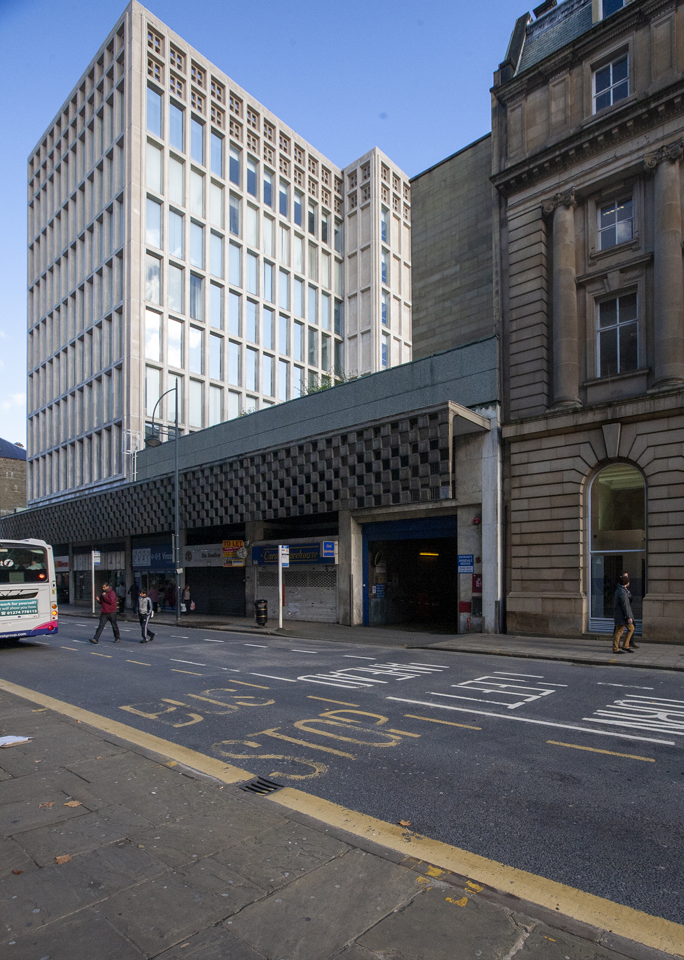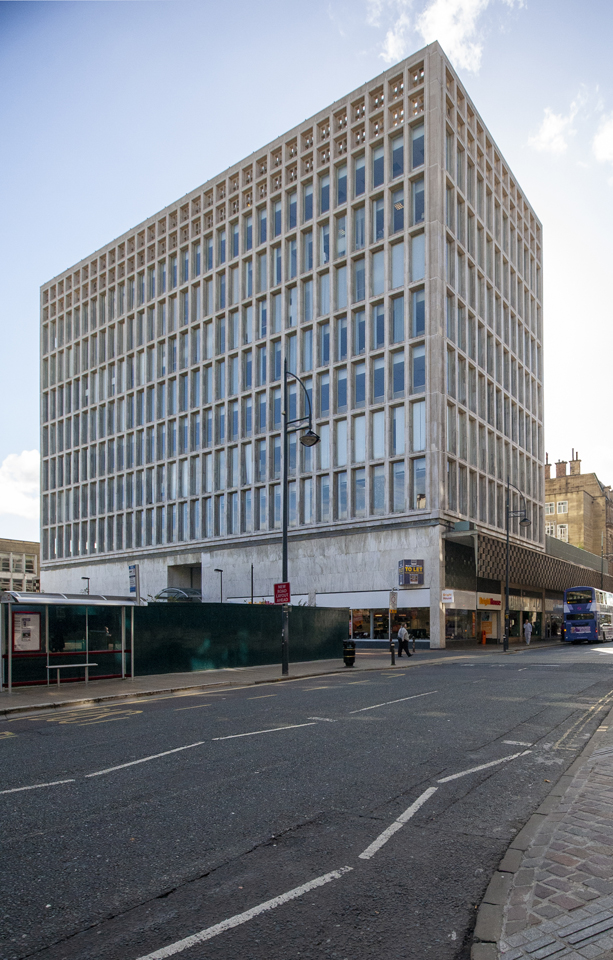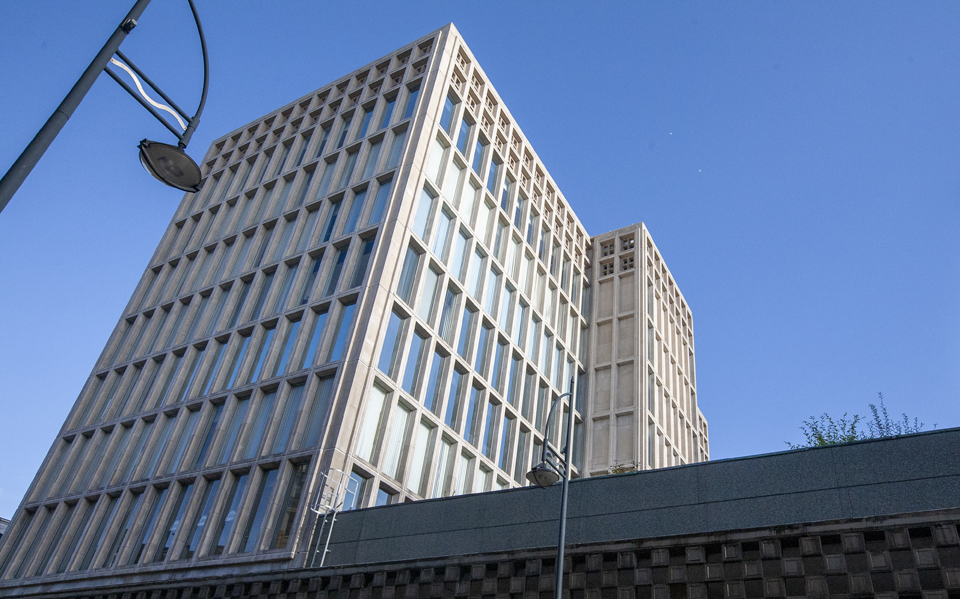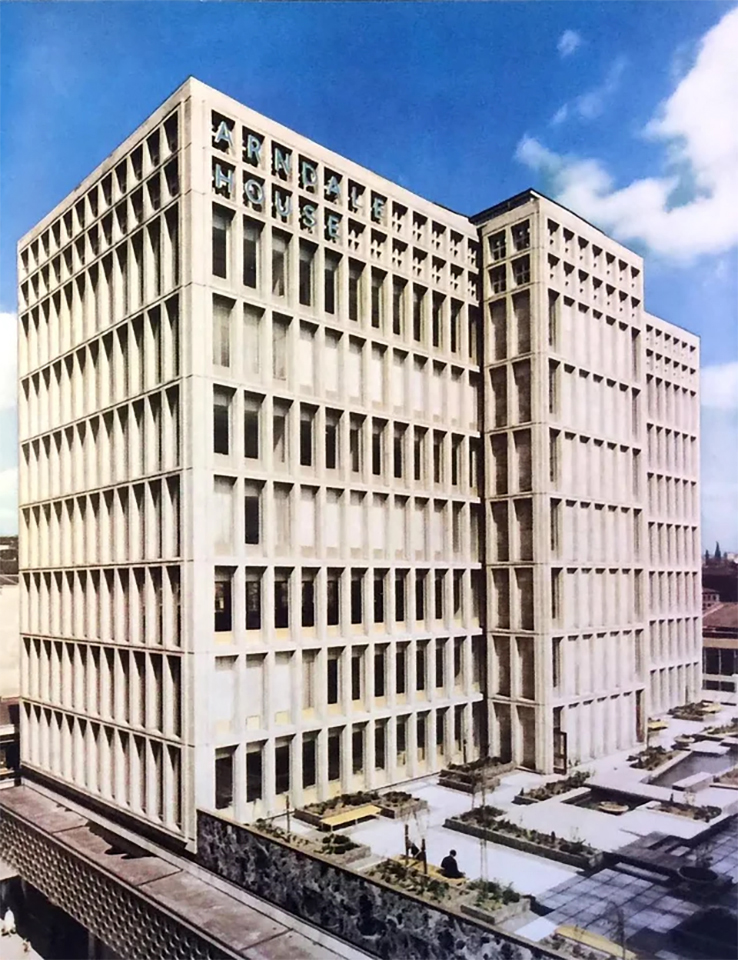Arndale House
1964
The Arndale Property Trust was one of the few major developers of the 1960s boom era that was headquartered in the north of England – most were from London and migrated out of the capital as returns became more attractive in provincial cities. Established in the early 1950s, the firm took its name from its founders, Arnold Hagenbach and Sam Chippindale. Hagenbach, a Yorkshireman of Swiss extraction, owned a chain of baker's shops and had invested in retail premises from 1939. Chippindale was an estate agent and former civil servant from Otley. Their first Arndale Centre opened in Jarrow, County Durham in 1961. Prior to that, the pair steadily acquired land across Northern towns and assembled sites in a piecemeal fashion often followed by partnerships with local authorities who had the power to enforce compulsory purchase orders. They bought land in Manchester for their largest development as early as 1952 and the first drawings for the scheme were made by Seattle and New York based John Graham and Partners, who also designed this, their new company headquarters in Bradford. Their most renowned scheme is the Space Needle in Seattle, a symbol of an optimistic future focussed society, built for the 1962 World’s Fair. In Bradford, the site between Market Street and Bank Street was purchased in 1954 and the 19th Century Swan Arcade was demolished in 1960 to make way for the nine-storey tower. It was usual for international firms to work with an Associate Architect with RIBA credentials – Arndale had an in-house architect, Percy Gray. The scheme is an understated piece of internationally styled mainstream modernism, concrete structure with fine Portland Stone cladding to give thick mullions and deeply recessed windows. The window frames were rebated into the stone to give a clean minimal appearance of simply stone and glass. The same module is repeated across the whole façade and only breaks at its head, where two half height panels shroud the roof mounted plant equipment behind inset perforated screens. The southern side of the tower has a roof garden that was always well stocked with plants that have now reached significant maturity and provide an exclusive and sheltered breakout space from the office tower. Heritage organisations campaigned for its listing in 2020, but it was not approved. During the subsequent redevelopment a hanging chequered screen was removed from the podium section of the building. Nonetheless, the glazing to the tower was sensitively detailed and the fine but austere gridded facades retain their quality.




